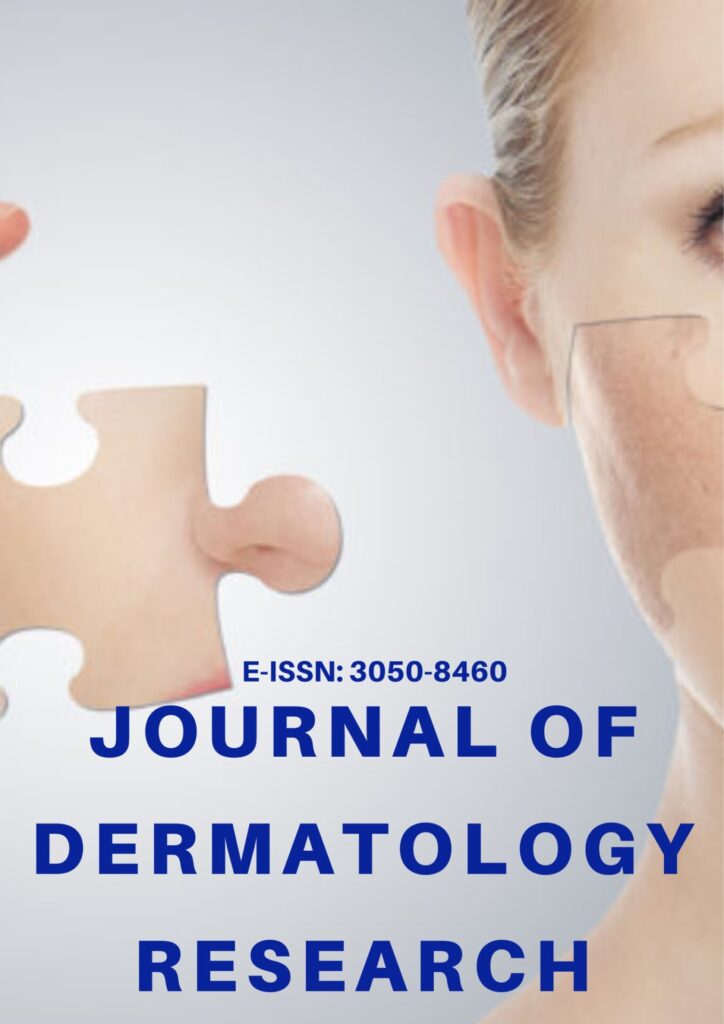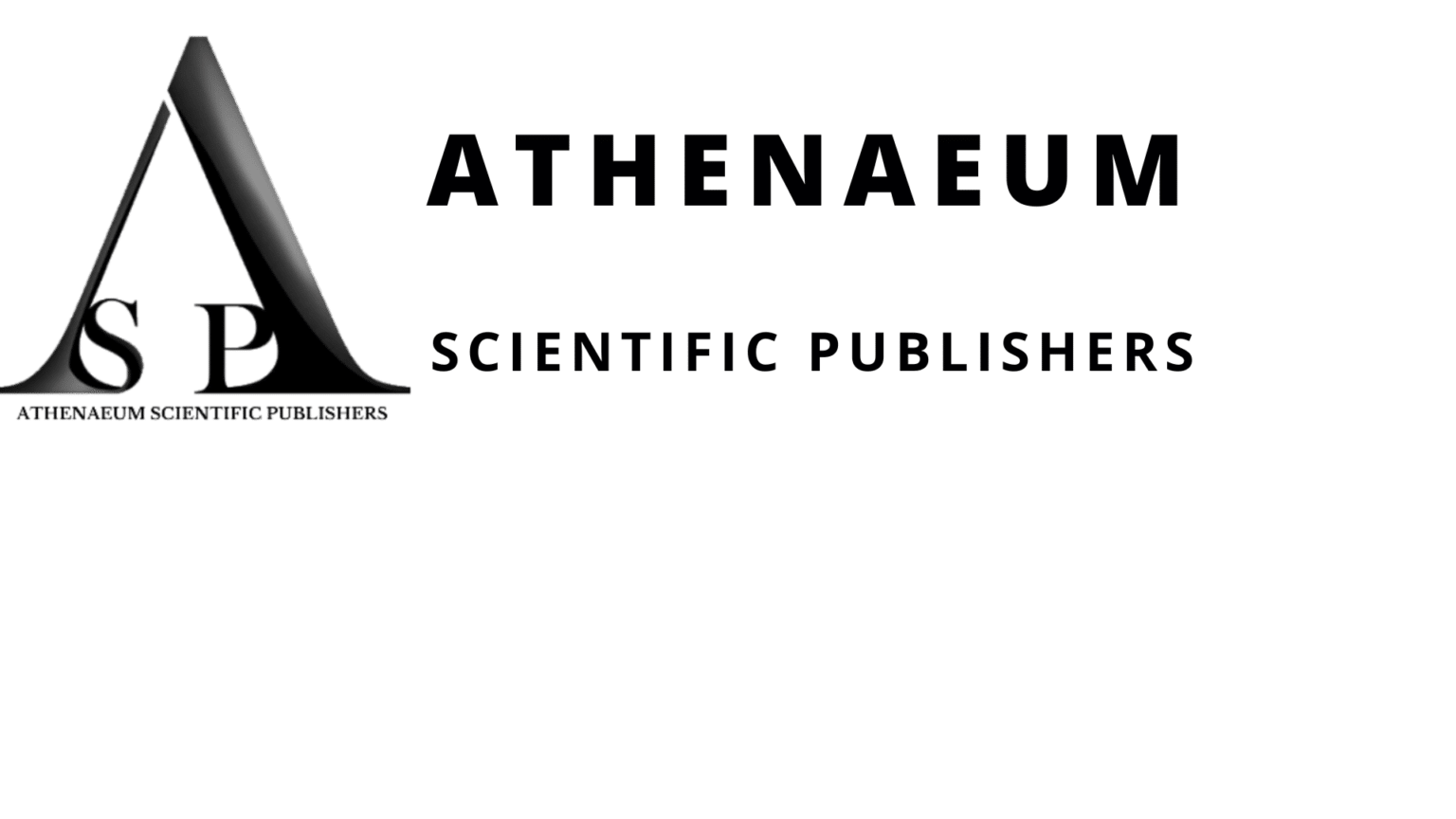Research Article | Vol. 6, Issue 1 | Journal of Dermatology Research | Open Access |
Clinico-Mycological Profile of Dermatophytic Skin Infection: Cross Section Study
Muhsin A Al-Dhalimi1*, Sura Abd Al-Razak Nief2
1Department of Dermatology, College of Medicine, University of Kufa, Iraq
2Imam Sadiq Teaching Hospital, Hilla Health Directorate, Hilla, Iraq
*Correspondence author: Muhsin A Al-Dhalimi, Department of Dermatology, College of Medicine, University of Kufa, Iraq; Email: [email protected]
Citation: Al-Dhalimi MA, et al. Clinico-Mycological Profile of Dermatophytic Skin Infection: Cross Section Study. J Dermatol Res. 2025;6(1):1-12.
Copyright© 2025 by Al-Dhalimi MA, et al. All rights reserved. This is an open access article distributed under the terms of the Creative Commons Attribution License, which permits unrestricted use, distribution, and reproduction in any medium, provided the original author and source are credited.
| Received 31 January, 2025 | Accepted 20 February, 2025 | Published 27 February, 2025 |
Abstract
Background: Dermatophytoses, commonly known as “ringworm”, are superficial fungal infections that affect the skin, hair, and nails.
Objective: To evaluate the clinical features of dermatophyte infection and identify the causative fungal species by direct microscopic examination and mycological culture.
Methods: The study was conducted over one year and included patients of both sexes and different ages. Scrapings were taken from skin, hair, and nails. Collected samples were subjected to KOH 10% to detect fungal elements. Additionally, mycological cultures were performed on modified Sabouraud’s dextrose liquid media incubated at room temperature for 1 to 6 weeks, then examined microscopically to identify fungi at the species level.
Results: In this study, a total of 100 patients were included, with a mean age of 30.29 ± 16.00 years. Fifty-six percent (56%) of the patients were female, and sixty-two percent (62%) of the patients resided in urban areas. T. corporis was observed in forty-six patients (46.0%), followed by T. cruris, which was present in twenty-three patients. The majority of patients (85.0%) presented with a non/ minimal inflammatory type. Trichophyton rubrum was the most commonly found, accounting for thirty-three cases (45.8%), this was followed by Epidermophyton floccosum (26.3%) and Trichophyton mentagrophytes (16.7%). The majority of tinea corporis cases were caused by Trichophyton rubrum, while tinea cruris cases were mostly caused by Epidermophyton floccosum. It was noted that most cases of Trichophyton rubrum and Epidermophyton floccosum presented with a non/ minimal inflammatory character. Microsporum gallinae, a species rarely isolated in our country, was presented in two patients with tinea capitis in this study, accounting for 2.8% of cases.
Conclusion: Trichophyton rubrum an anthropophilic fungi was the most common isolated species. Anthropophilic infections are often epidemic in nature. Therefore, implementing preventive measures is crucial to restrict spread of infection.
Keywords: Dermatophytes; KOH; Culture; Tinea
Introduction
Dermatophytosis is a superficial fungal infections that affects the skin, hair, and nails [1]. These fungi belong to the family Arthrodermataceae, and the term “dermatophyte” is derived from the Greek words for “skin plant” [2]. There are approximately 40 species of dermatophytes, which are divided into three genera: Epidermophyton, Microsporum, and Trichophyton [3]. In the newly proposed taxonomy, more than 50 dermatophyte species are distributed into nine genera [4]. Dermatphytes are classified in several ways: the classification according to natural habitat is clinically relevant, anthropophilic, which has adapted to humans as hosts and elicits a mild to noninflammatory host response, zoophilic, which is transmitted to humans from animals, and may cause acute and intense inflammatory responses in humans:- the major pathogenic species in this category are Microsporum canis and T. mentagrophytes٫ and geophilic which cause sporadic human infection upon direct contact with the soil [2,5,6]. Superficial fungal infections are a worldwide problem that affect more than 20-25% of the population [2,7]. The complex interplay between agents, hosts and environment plays a role in the pathogenesis of dermatophytosis. Immunocompromised states (e.g., diabetes mellitus, lymphoma, chronic illnesses) and intertriginous areas, such as the groin, axilla, and inter-web spaces, are more vulnerable to infection owing to excess sweating, rubbing, and alkaline pH [6]. Environmental factors that increase the risk of infection include high humidity, high temperature, increased urbanization, use of tight-fitting clothes, and occlusive footwear. The typical incubation period for dermatophyte infections is 1 – 3 weeks [1].
Dermatophyte infections (tinea) are classified by body region, and the clinical presentation can vary accordingly. Tinea corporis refers to an infection of the glabrous skin (i.e., skin other than scalp, groin, palms, and soles), T. rubrum is the most common pathogen worldwide, followed by T. mentagrophytes [1,2]. Pustules or vesicles may be dominant in inflammatory lesions of dermatophyte infections, whereas less inflammatory infections are commonly associated with scaling [8]. Tinea cruris typically affects the inner aspects of the upper thighs and crural folds, with occasional extension onto the abdomen and buttocks, and is common in adults and in males, as the scrotum provides a warm and moist environment that encourages fungal growth [1,9]. Clinical diagnosis of Tinea faciei is challenging because some infections have classic features such as scale, annular configuration, and pustules in the border, while others require a high index of suspicion [1]. Tinea barbae which primarily affects males, the mode of acquisition has shifted to direct exposure to cattle, horses, or dogs, and this accounts for a higher prevalence among farmers and ranchers in rural settings [2]. Tinea manum, infection of the palm and interdigital spaces of the hands, while Tinea pedis infection of the soles and interdigital web spaces of the feet. Tinea unguium is characterized by a fungal infection of the nail plate. Although T. rubrum is the most common causative agent, there are many other fungi that can also cause the condition, which are divided into Distal/Lateral Subungual (DLSO) (the most common clinical presentation, which accounts for 75% of toenail infections), superficial white, proximal subungual ( which may be a sign of HIV infection), and mixed patterns [1,10,11]. Tinea capitis occurs most frequently in prepubertal children between 3 and 14 years of age, and the fungistatic effect of fatty acids in sebum may help to explain the sharp decrease in incidence after puberty [2]. Only two genera, Trichophyton and Microsporum, are responsible for the causation of tinea capitis [1]. Noninflammatory (“gray patch” tinea capitis and “Black Dot” Tinea Capitis), inflammatory type (can range from follicular pustules to furunculosis or kerion) and favus is most commonly caused by T. schoenleinii, characterized by thick, yellow crusts made up of hyphae and skin debris (known as “scutula”) [1,2]. Tinea (incognito) is a dermatophyte infection that has been modified by the misuse of topical or systemic corticosteroids. Scaling at the margins may be absent, and the condition may present with diffuse erythema, diffuse scale, scattered pustules or papules, and brown hyperpigmentation [3]. An immune-mediated phenomenon called “tinea pseudoimbricata, is a specific type of tinea incognito characterized by “rings within the ring” and “double-edged tinea” appearance. Usually, Trichophyton mentagrophytes are usually isolated from lesions [12].
A worldwide increase in superficial dermatophyte infections of the skin with varying degrees of local inflammation had been reported in recent years [13]. Delays in diagnosis and improper treatment can lead to disseminated and refractory lesions; therefore, it is crucial to identify the specific dermatophyte species to determine the source of the infection. Definitive identification requires fungal culture until molecular methods can be improved and generalized [15]. It is important to consider patient compliance when prescribing antifungal medications, as most patients fail to complete antifungal therapy and often stop treatment as soon as they experience relief from clinical symptoms [17]. Implementing preventive measures, especially in cases of anthropophilic infection, is crucial; clothes and bed linen should be washed in hot water and dried in sunlight, preferably inside out, to destroy dermatophytes; if sunlight is not available, ironing clothes would be beneficial [18]. By understanding these measures, following proper cleaning practices, and raising awareness of the consequences of neglecting these instructions, individuals can effectively control the spread of anthropophilic infections and promote faster recovery.
Aim of the Study
To evaluate the clinical features of dermatophyte infections and identify the causative fungal species by direct microscopic examination and mycological culture.
Patients and Methodology
This cross-sectional descriptive study was conducted in the dermatology department of AlSader Medical City in Al-Najaf province between May 2022 and June 2023. Verbal consent was obtained from all the patients following an explanation of the nature of the study. Ethical approval was taken from the Scientific Council of Dermatology and Venerology Iraqi board for medical specialties (IRB-IBMS- 2023).
A total of 100 patients of both sexes and different age groups attending a dermatology outpatient clinic with a clinical diagnosis of dermatophytosis were randomly selected (convenience sampling). Patients on topical antifungals or topical antifungals in the last two weeks, patients on systemic antifungals or used systemic antifungals in the last three months and negative KOH examination were excluded [16]. Their full history was documented on a questionnaire, and a detailed examination of the skin lesions was conducted to determine the clinical types and characteristic findings of the lesions. Dermoscopy was performed in cases of Tinea capitis (Fig. 2) to confirm the diagnosis of dermatophyte infection. Trichoscopy was performed using [3 Gen Dermlite DL 100] dermoscopy at 10 folds magnification.
Diagnosis was based on clinical features and direct microscopic examination (10-20% KOH). Therefore, any suspected skin, hair, or nail lesions were examined for the presence of fungal elements using 10% KOH solution. Two samples were obtained from the same lesion for each patient: one for KOH examination and the other for mycological culture. The lesions were cleaned with 70% alcohol, especially if the patient had applied any ointment or powder, scraping was performed using the blunt edge of a glass slide held vertically to the skin on the active border of the lesion, nail lesions were clipped to the most proximal point possible without causing discomfort by nail clipper, any subungual debris was collected by scraping the area under the trimmed nail with curette, while hair lesions were epilated with intact root using epilation forceps [14]. One scraping sample was placed on a glass slide, and one drop of 10% KOH was applied to the edge of the coverslip and allowed to run under capillary action, then gently pressed to facilitate the separation of the epithelial cells and fungal hyphae [3]. The time required before examination under a microscope differed according to the specimen, 10-30 minutes for scales, 1 h for hair specimens, and 24 h for nail specimens. All the specimens were left dissolved for the entire time required, as mentioned above, without heating. Then, the slide was examined under a microscope at low power and then at high powers (20x and 40x) to confirm the presence of hyphae or spores. Negative samples were discarded, while positive KOH samples (Fig. 3) were included and transported to the microbiology laboratory in a plain tube on the same day as sampling. The samples were then processed for mycological culture, and the scraping specimens obtained from the patients were inoculated into modified Sabouraud’s dextrose liquid media, which was supplemented with chloramphenicol and cycloheximide to eliminate contaminant molds, yeast, and bacteria, making it highly selective for the isolation of dermatophytes. The media containing the inoculated samples were placed in an incubator set at room temperature, typically ranging from 22°C to 33°C. The incubation period lasted for a duration that varied between 1 and 6 weeks, after six weeks, if no growth was observed on the culture media, the result was considered negative. However, if visible growth was observed on the medium, it was carefully examined under the microscope. The identification process involved observing and analyzing various morphological characteristics of the fungi under a microscope, and the morphological features of hyphae, conidia, and spore types were carefully examined (Fig. 4). These hyphae can vary in size, shape, and arrangement, when examining the conidia arrangement, and other spore types such as chlamydospores or arthrospores may also be present in certain fungal species, providing important clues for species identification. Statistical analysis was performed using SPSS version 27, and categorical variables are presented as frequencies and percentages.
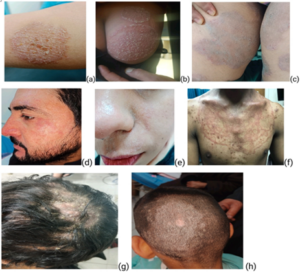
Figure 1: (a, b) Tinea corporis; (c) Tinea cruris; (d, e) Tinea faciei; (f) Tinea incognito; (g)Kerion type of TC; (h) Gray patch type of TC.
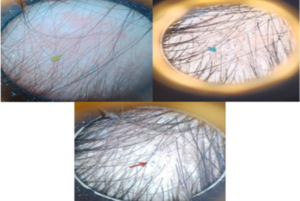
Figure 2: Trichoscopy of different patients with TC, Showing perifollicular scaling (green arrow), diffuse scaling, background erythema, comma hair(blue arrow) and corkscrew hair (red arrow).
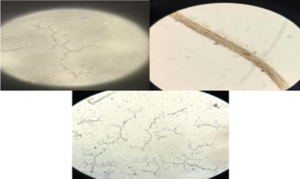
Figure 3: Positive KOH examination.
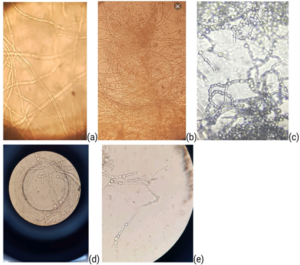
Figure 4: (a) T. rubrum; (b) T. mentagrophytes; (c) E. floccosum; (d) M. gallinae; (e) M. audouinii.
Results
A total of 100 clinical samples were collected from suspected dermatophytosis cases. The age of the patients ranged from 6 months to 70 years, the mean age of the patients was (30.29 ± 16.00) years, and 30% of the patients were age group of (20-29 years). Females comprised fifty-six percent (N=56, 56%) of the patients, while sixty-two (N=62, 62%) patients resided in urban areas, as shown in (Fig. 5). A positive family history represented 55.0% of the patients, whereas positive animal contact represented 63.0% of the patients. The distribution of patients with fungal infection according to the duration of infection, revealed that (N=91, 91.0%) had a duration of infection of (<6 months), the shortest recorded duration was one week, the longest observed duration was 2 years. According to the time of presentation, the majority of the patients presented between (October and December) and (April and June) accounting (41%) and (31%) respectively, as shown in (Fig. 6). While the history of previous treatment and type of treatment, revealed that forty patients (40.0%) had history of previous treatment. Twenty eight patients of them (70.0%) used topical steroids. The majority of patients presented with itching, which was localised to the skin lesions (N=76, 76.0%).

Figure 5: (a) Distribution of the patients with fungal infection according to the sex; (b) Distribution of the patients with fungal infection according to the residence.
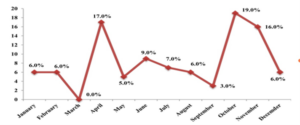
Figure 6: Distribution of the patients with fungal infection according to the time of presentation.
According to the clinical types of infection, T. corporis was observed in forty-six percent of the patients (N=46, 46.0%), followed by T. cruris, which was present in twenty-three patients as depicted in (Fig. 7). Regarding the number of lesions, 84% of patients presented with multiple lesions (>1). According to the characteristics of the lesions, most of patients (N=85, 85.0%) presented with a non or minimal inflammatory type (scales and/ or erythema). Regarding Tinea capitis (more detailed classification), the most common clinical presentation is patchy hair loss “Gray patch” type (ectothrix) account approximately two thirds of the TC cases (68.4%), while “Black dot” type (endothrix) founded in (21.1%). Positive culture was detected in approximately three quarters of the patients (N=72, 72.0%). Most dermatophytes showed growth in culture within 7-10 days. Among the detected dermatophyte species, Trichophyton rubrum was the most common, accounting for thirty-three cases (45.8%), followed by Epidermophyton floccosum (N=19, 26.3%) and Trichophyton mentagrophytes (N=12, 16.7%).
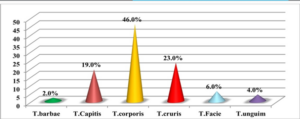
Figure 7: Distribution of the patients with fungal infection according to the clinical types of infection.
Differences were observed with younger age found among those with Microsporum infection, with a mean age of 14.29 ± 4.82 years. Regarding residence, an association was found between urban residence and Epidermophyton infection. In terms of family history, all patients in the Microsporum group had a negative family history. Microsporum and Epidermophyton species were present within a duration of less than 6 months. Most cases using topical steroids presented with Trichophyton and Epidermophyton infections. Moreover, it was observed that most patients with Trichophyton infections and all cases of Epidermophyton infections presented with itching. There were no differences in the number of lesions between the number of lesions and type of species (Table1). The majority of Tinea corporis cases were caused by Trichophyton rubrum, while Tinea cruris cases were mostly caused by Epidermophyton floccosum, as mentioned in (Table 2). Regarding the association between culture results and lesion characteristic, as illustrated in (Table 3), it was observed that most cases of Trichophyton rubrum and Epidermophyton floccosum presented with a non/ minimal inflammatory character, whereas most inflammatory lesions occurred with Trichophyton mentographytes infection. Perifollicular scaling was present in all cases of Trichophyton infection (T. Mentographytes and T. Verrcusum ) and in half of the cases of Microsporum infection (M. Canis and M. Galliniae). This finding represents the most commonly observed trichoscopic finding in the present study. Among a total one 100 patients, 11 (11.0%) had atypical lesions, six of them (6.0%) had a dermatitis-like presentation. Most cases with a dermatitis-like presentation were attributed to Trichophyton rubrum infection.
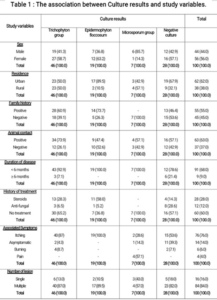
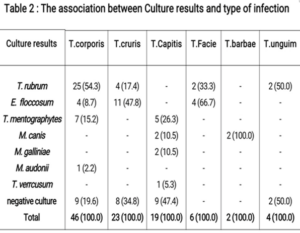
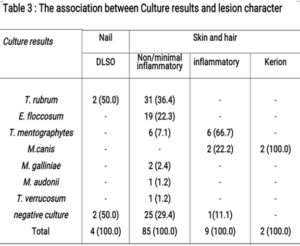
Discussion
Dermatophytic infections were found to affect individuals of almost all age groups. However, the predominant age group affected was young adults aged 20-29 years, accounting for 30% of cases. This finding is consistent with Jahan T, et al.,) and Balamurgagunvelu, et al., [20,21]. The higher susceptibility of this age group may be attributed to their increased level of physical activity, leading to excessive sweating, which provides an ideal environment for dermatophyte growth. Microsporum infections are more prevalent in younger age groups than in Trichophyton and Epidermophyton infections which was in agreement with Alshehri, et al., in which peak incidence at early age was due to cases of tinea capitis, mainly caused by Microsporum species [22]. Children are considered the most susceptible individuals to tinea capitis owing to the inadequacy of natural protective fatty acids synthesized in their scalp, especially among prepubescent children [24].
While some previous reports have mentioned sex differences, others have not specifically addressed such variations. Females are more susceptible to dermatophyte infections than males, which is in agreement with other studies(26)(28)(24). However, our results contradict those of other studies, such as Al-Hmadani, et al., and Sharquie et al., which reported a higher incidence of dermatophyte infections in males compared than in females [13,23]. Microsporum infections were observed more frequently in males than in females, which aligns with previous studies, including that of Alshehri, et al., [22].
Approximately two-thirds of the patients (62%) were residence of urban areas, which is consistent with the results reported by (Al-Hmadani, et al., [23]. However, these results contradict earlier studies, which reported a higher percentage of patients from rural areas [20,29]. This variation could be attributed to factors such as access to health centers and overcrowding in urban areas which leads to increased contact between healthy individuals and patients. Epidermophyton floccosum was more frequently found in urban areas (89.5%), which can be explained by the anthropophilic nature of this species.
In terms of family history, our results indicate that approximately half of the patients had a positive family history of dermatophyte infection, which is consistent with the findings of the study conducted by Farag AGA, et al., Shenoy M, et al., [30,31]. This indicates the contagious nature of this infection and factors such as overcrowding, large family size and sharing of personal items contribute to the spread of infections among family members [31]. The association of Epidermophyton and Trichophyton species with family history can be attributed to their (human-to-human) mode of transmission.
Regarding animal contact, accounted for (63%) of fungal infections, which aligns with the findings of Farag AGA, et al., and Alolofi, et al., [30,35]. The observed high percentage of animal contact because of the high percentage of anthropophilic species in the study can be partly explained by the improved hygienic care practices and early recognition of fungal infections in domestic animals, particularly in urban areas. Pet owners in urban settings may be more vigilant in maintaining cleanliness and seeking prompt veterinary care if they suspect fungal infection.
In the present study, 91% of the patients had an duration of infection less than six months, which contrasts with the findings of several other studies that who found a higher incidence of chronic dermatophytosis [31,32,34,35]. There are possible explanations for this disagreement: the high prevalence of itching leads to early medical consultation and treatment, and the exclusion of patients who were already receiving antifungal treatment from the study may have resulted in a decreased number of patients with chronic dermatophytosis.
In the present study, dermatophytosis cases were reported throughout the year, with a higher prevalence observed from (October to December), accounting for 41% of the cases. These findings are consistent with a study conducted by Nussipov, et al., [34]. Additionally, the findings are in agreement with a study conducted by Balamuruganvelu S, et al., which reported the maximum prevalence of dermatophytosis from April to June, which was the second most common finding in the present study [21]. However, Alshehri, et al., reported higher incidence rates between December and May [22]. These variations in seasonal prevalence could be influenced by various factors such as climate, environmental conditions, and regional differences in the prevalence of dermatophytes. Treated cases accounted about 40% of the study population, 12% used antifungals whether topical or systemic and 28% used topical steroids, these findings are consistent with recent studies Singh, et al., and in Nenoff, et al., [36,37]. Among patients who used topical steroids, Trichophyton infection was the most common, followed by Epidermophyton, infection which is consistent with a study by Dutta, et al., [38].
In the present study, itching was found to be the predominant symptom accounting for 76% of the cases, as reported by Verma, et al., [32]. Itching plays a significant role in superficial dermatophytoses and can have a negative impact on sleep and carry a significant psychosocial burden [39]. Most patients with Epidermophyton infection and Trichophyton infection presented with itching, which could be attributed to the misuse of topical steroids, which can actually increase itching after stopping treatment. Patients with multiple lesions (two lesions or more), accounted for (84%) of the cases. Increased virulence and infectivity of the organism or a decrease in local immunity by the use of topical steroids may be possible explanations.
Tinea corporis was the most predominant clinical type accounting for 46% of the cases (Fig. 1) which is consistent with several other studies and supports the findings of the present study [23,25,35]. Tinea cruris (Fig. 1) was the second most common clinical type, accounting for 23% of the cases. The distribution of patients with different clinical types may vary depending on factors such as patients selection, host factors, environmental factors, and regional variation [23]. Regarding trichoscopic findings, perifollicular scaling was the most common trichoscopic finding, consistent with the study by Brasileiro, et al., which revealed that the most common trichoscopic findings in patients with tinea capitis were perifollicular scaling, diffuse scaling, and broken hair [40].
The results of culture in our study showed that 72% of the cases yielded positive results, Trichophyton rubrum was identified as the most common isolated species, accounting for (45.8%), followed by Epidermophyton floccosum, which accounted for (26.3%) of the isolates, which is consistent with the study conducted by Aruna, et al., [25]. The predominance of Trichophyton rubrum has been described in previous studies [27,38]. However, the results of the present study were discordant with the findings of Sharquie, et al., AL-Janabi, et al., and several Indian studies which found Trichophyton mentagrophytes was the predominant species [13,19,20,26]. This variation may be attributed to differences in the locations of the patients’ residency and the types of clinical cases [23]. In Tinea corporis T. Rubrum (54.3%) was the most predominant species, Epidermophyton floccosum (47.8%) was most commonly isolated from Tinea cruris, T. Mentographytes isolated from Tinea corporis (15.2%) and Tinea capitis (26.3%). These results were in agreement with Aruna, et al., [25] .
In this study, it was found that (85%) of dermatophyte infection presentations had non/ minimal inflammatory characteristics. In this group, Trichophyton rubrum was the predominant species, accounting for (36.4%) of the cases. This can be attributed to the anthropophilic nature of T. rubrum, which often leads to non-inflammatory lesions, as mentioned in the literature. In cases of highly inflammatory lesions, Trichophyton mentagrophytes was the most commonly isolated species. This could be attributed to the zoophilic nature of T. mentagrophytes. Kerion, a severe inflammatory form of Tinea capitis, was reported in two cases in this study (Fig. 1), and the only isolated species from these lesions was Microsporum canis which is consistent with the results of Chiriac, et al., [41].
Regarding Microsporum gallinae, zoophilic species were acquired from chickens and were reported previously in 2011 as the first case of M. gallinae infection in a human reported in Japan [42]. In the present study, M. galliniae was isolated from two cases of grey patches of tinea capitis (Fig. 1). This study also reported 11 cases of dermatophyte infections with unusual presentations that mimicked other dermatoses. Among these patients, six presented with dermatitis-like lesions, and Trichophyton rubrum was isolated in four patients. Additionally, there was a case of an imbricata-like (pseudoimbricata) presentation (Fig. 1), Trichophyton mentagrophytes was isolated in this case. This type has been previously reported in India, increased travel might have contributed to the presentation of this unusual form [12].
Limitations
The number of patients was not large and they were recruited only from one center, therefore, it was not a true representation of the population. Additionally, patients were excluded due to their use of antifungals at the time of presentation and lack of compliance to omit treatment, even for a few weeks to be included in the study.
Conclusion
Mycological culture is considered the gold standard for confirming the presence of dermatophytes, allowing for the identification and differentiation between species and aiding in appropriate treatment decisions. Trichophyton rubrum an anthropophilic species, is the most commonly isolated species. Anthropophilic infections are often epidemics in nature. Therefore, implementing preventive measures is crucial to restrict the spread of infection.
Conflicts of Interest
The authors have carried out the work on their own and the ICMJE form for Disclosure of Potential Conflicts of Interest have been submitted and none were declared.
References
- Elewski BE, Hughey LC, Hunt KM, Hay RJ. Fungal Diseases. In: Bolognia JL, Schaffer JV, Cerroni L, editors. Bolognia textbook of dermatology. Elsevier. 2018;4:1329-62.
- Schieke SM, Garg A. Superficial fungal infection. In: Goldsmith LA, Katz SI, Gilchrest BA, Paller AS, Leffell DJ, Wolff K, editors. Fitzpatrick’s dermatology in general medicine. Mc Graw Hill Book Company. 2019;9:2277-97.
- Habif TP, Campbell JL, Chapman MS, Dinulos JG, Zug KA. Superficial fungal infections. In: Dinulos JGH, editor. Habif’s clinical dermatology: A color guide to diagnosis and therapy. Elsevier. 2021;7:483-524.
- de Hoog GS, Dukik K, Monod M, Packeu A, Stubbe D, Hendrickx M, et al. Toward a novel multilocus phylogenetic taxonomy for the dermatophytes. Mycopathologia. 2017;182(1-2):5-31.
- Zhan P, Liang G, Liu W. Dermatophytes and dermatophytic infections worldwide. In: Bouchara JP, Nenoff P, Gupta AK, Chaturvedi V, editors. Dermatophytes and Dermatophytoses. Springer. 2021:1:15-34.
- Shishira R. Jartarkar, Anant Patil, Yaser Goldust. Pathogenesis, immunology and management of dermatophytosis. J Fungi. 2022;8(1):39.
- Sharquie KE, Jabbar RI. New multiple therapy of resistant and relapsing dermatophyte infections during epidemic status. J Pak Assoc Dermatol. 2022;32(3):464-71.
- Griffiths CEM, Bleiker TO, Creamer D, Ingram JR, Simpson RC. Fungal infections. In: Rook’s dermatology handbook. Wiley Blackwell; 2022;1:106-23.
- Hay RJ, Ashbee HR. Fungal infections. In: Griffiths CEM, Barker J, Bleiker T, Chalmers R, Creamer D, editors. Rook’s textbook of dermatology. Wiley-Blackwell; 2016;9:32.1-96.
- James WD, Elston DM, Treat JR. Diseases resulting from fungi and yeasts. In: James WD, Elston DM, Treat JR, Rosenbach MA, Neuhaus IM, editors. Andrews’ diseases of the skin clinical dermatology. Elsevier. 2020;13:292-323.
- Hay RJ, Elewski B, Piraccini BM, Sullivan N, Wang C, Baran R. Fungal (onychomycosis) and other infections involving the nail apparatus. In: Baran R, editor. Baran & Dawber’s diseases of the nails and their management. Hoboken, NJ: Wiley-Blackwell. 2019;5:349-89.
- Marfatia YS, Menon DS. Steroid modified tinea. In: Sardana K, Khurana A, Garg S, Poojary S, editors. IADVL Manual on management of dermatophytoses. CBS Publishers and Distributors. 2018;2:73-8.
- Sharquie KE, Jabbar RI. Major outbreak of dermatophyte infections leading into imitation of different skin diseases: Trichophyton mentagrophytes is the main criminal fungus. J Turk Acad Dermatol. 2021;15(4):91-100.
- Das S, Tigga RA. Investigations for diagnosing dermatophyte infection. In: Sardana K, Khurana A, Garg S, Poojary S, editors. IADVL Manual on management of dermatophytoses. CBS Publishers and Distributors; 2018;2:14-31.
- Feuilhade de Chauvin M. Mycological analysis in dermatology. Ann Dermatol Venereol. 2018;145(10):623-32.
- Brun S, Pihet M. Laboratory diagnosis of dermatophytosis. In: Bouchara JP, Nenoff P, Gupta AK, Chaturvedi V, editors. Dermatophytes and dermatophytoses. Springer. 2021;1:355-70.
- Chhabra N, Sardana K. Topical therapies for treatment of dermatophytosis. In: Sardana K, Khurana A, Garg S, Poojary S, editors. IADVL Manual on management of dermatophytoses. CBS Publishers and Distributors. 2018;2:41-50.
- Chhabra N. General measures for treating fungal infections. In: Sardana K, Khurana A, Garg S, Poojary S, editors. IADVL manual on management of dermatophytoses. CBS Publishers and Distributors; 2018;2:39-40.
- Kaur I, Thakur K, Sood A. Clinico-mycological profile of clinically diagnosed cases of dermatophytosis in North India – a prospective cross-sectional study. Int J Health Sci Res. 2016;6(8):54-60.
- Jahan T, Farhana A, Kanth F. Prevalence and spectrum of dermatophytes in patients attending a tertiary care hospital Srinagar, Kashmir. Int J Res Med Sci. 2021;9(4):1064-70.
- Balamuruganvelu S, Reddy SV, Babu G. Age and gender wise seasonal distribution of dermatophytosis in a tertiary care hospital, Puducherry, Indian. J Clinical Diagnostic Res. 2019;13(2):43-9.
- Alshehri BA, Alamri AM, Rabaan AA, Al-Tawfiq JA. Epidemiology of dermatophytes isolated from clinical samples in a hospital in eastern Saudi Arabia: A 20-year survey. J Epidemiol Glob Health. 2021;11:405-12.
- Al-Hmadani AH, Al-Dhalimi MA, Alrufae MM. Epidemiologic study of dermatophytosis in Al-Najaf government. Mag AlKufa Univ Biol. 2014;6:1-14.
- Araya S, Tesfaye B, Fente D. Epidemiology of dermatophyte and nondermatophyte fungi infection in Ethiopia. Clin Cosmet Investig Dermatol. 2020;13:291-7.
- Aruna GL, Ramalingappa B. A clinico-mycological study of human dermatophytosis in Chitradurga, Karnataka, India. JMSCR. 2017;5(7):25743-9.
- AL-Janabi AASHS, Mohamed JK. Dermatophytes isolation from patients with dermatophytosis in Karbala, 2017. Int J Med Sci Curr Res. 2021;4(3):655-60.
- Mohammed SJ, Noaimi AA, Sharquie KE, Karhoot JM, Jebur MS, Abood JR, et al. A survey of dermatophytes isolated from Iraqi patients in Baghdad city. Al-Qadisiah Medical J. 2015;11:10-15.
- Hindy NAA, Abiess AAA. Isolation and identification of dermatophytes causing dermatophytosis in Hilla City, Iraq. Indian J Public Health Res Dev. 2019;10(10):2225-30.
- Abed Ali FA, Al-Janabi JK, Al Hattab MK. Prevalence of dermatophyte fungal infection in Hillah, Iraq. Int J Chem Tech Res. 2017;10:827-37.
- Farag AGA, Hammam MA, Ibrahim RA, Mahfouz RZ. Epidemiology of dermatophyte infections among school children in Menoufia Governorate, Egypt. Mycoses. 2018;61:321-5.
- Shenoy MM, Rengasamy M, Dogra S. A multicentric clinical and epidemiological study of chronic and recurrent dermatophytosis in India. Mycoses. 2021;1-11.
- Verma SB, Panda S, Nenoff P, Singal A, Rudramurthy SM, Uhrlass S, et al. The unprecedented epidemic-like scenario of dermatophytosis in India: I. Epidemiology, risk factors and clinical features. Indian J Dermatol Venereol Leprol. 2021;87:154-75.
- Vineetha M, Sheeja S, Celine MI, Sadeep MS, Palackal S, Shanimole PE, et al. Profile of dermatophytosis in a tertiary care center. Indian J Dermatol. 2018;63:490-5.
- Nussipov Y, Markabayeva A, Gianfaldoni S, Tchernev G, Wollina U, Lotti J, et al. Clinical and epidemiological features of dermatophyte infections in Almaty, Kazakhstan. Open Access Maced J Med Sci. 2017;5(4):409-13.
- Alolofi SAY, Yagoub SO, Nimir AH. Dermatophytosis: Etiological agents and associated risk factors. Electron J Univ Aden Basic Appl Sci. 2022;3(2):57-65.
- Singh S, Verma P, Chandra U, Tiwary NK. Risk factors for chronic and chronic-relapsing tinea corporis, tinea cruris and tinea faciei: Results of a case-control study. Indian J Dermatol Venereol Leprol. 2019;85:197-200.
- Nenoff P, Verma SB, Vasani R, Burmester A, Hipler UC, Wittig F, et al. The current Indian epidemic of superficial dermatophytosis due to trichophyton mentagrophytes: A molecular study. Mycoses. 2019;62:336-56.
- Dutta B, Rasul ES, Boro B. Clinico-epidemiological study of tinea incognito with microbiological correlation. Indian J Dermatol Venereol Leprol. 2017;83(3):326-31.
- Verma S, Vasani R, Reszke R, Matusiak Ł, Szepietowski JC. Prevalence and clinical characteristics of itch in epidemic-like scenario of dermatophytoses in India: A cross-sectional study. J Eur Acad Dermatol Venereol. 2020;34:180-3.
- Brasileiro A, Campos S, Cabete J. Trichoscopy as an additional tool for the differential diagnosis of tinea capitis: a prospective clinical study. Br J Dermatol. 2016;175(1):208-9.
- Chiriac A, Birsan C, Mares M, Wollina U. Kerion Celsi durch Microsporum canis [Kerion Celsi due to Microsporum canis infection]. Hautarzt. 2021;72(10):855-9.
- Miyasato H, Yamaguchi S, Taira K, Hosokawa A, Kayo S, Sano A, et al. Tinea corporis caused by Microsporum gallinae: first clinical case in Japan. J Dermatol. 2011;38:473-8.
Author Info
Muhsin A Al-Dhalimi1*, Sura Abd Al-Razak Nief2
1Department of Dermatology, College of Medicine, University of Kufa, Iraq
2Imam Sadiq Teaching Hospital, Hilla Health Directorate, Hilla, Iraq
*Correspondence author: Muhsin A Al-Dhalimi, Department of Dermatology, College of Medicine, University of Kufa, Iraq; Email: [email protected]
Copyright
Muhsin A Al-Dhalimi1*, Sura Abd Al-Razak Nief2
1Department of Dermatology, College of Medicine, University of Kufa, Iraq
2Imam Sadiq Teaching Hospital, Hilla Health Directorate, Hilla, Iraq
*Correspondence author: Muhsin A Al-Dhalimi, Department of Dermatology, College of Medicine, University of Kufa, Iraq; Email: [email protected]
Copyright© 2025 by Al-Dhalimi MA, et al. All rights reserved. This is an open access article distributed under the terms of the Creative Commons Attribution License, which permits unrestricted use, distribution, and reproduction in any medium, provided the original author and source are credited.
Citation
Citation: Al-Dhalimi MA, et al. Clinico-Mycological Profile of Dermatophytic Skin Infection: Cross Section Study. J Dermatol Res. 2025;6(1):1-12.

